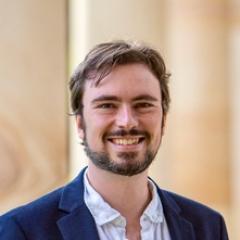Naked-eye stars and their planets with TESS
Project level: Honours; PhD
We now know that nearly all stars host planets, and exoplanet science is now turning to bright individual systems. There are 2 PhD positions available, funded by an ARC DECRA fellowship which aims to study the nearest, brightest stars by extending the capabilities of NASA's TESS telescope and Queensland's Mount Kent Observatory. This is significant as the best chance we have to detect planets around stars bright enough to measure the planetary and stellar properties precisely. We will search for planets transiting nearby naked-eye stars, and make crucial measurements of the masses of these stars and planets.
On the TESS side of the project, we are interested in extending its capabilities to better study bright stars that saturate the camera - essentially, developing a 'high dynamic range' mode for a space telescope. The telescope was designed to look at thousands of faint stars, and the very brightest stars are overexposed and saturate the camera. With Dr Tim White from the University of Sydney, we have been using the technique of 'halo photometry' to recover precise light curves from K2 data and now moving on to TESS. There is a scattered light halo around the central dot of each star, from diffraction and reflection inside the telescope, covering hundreds of pixels. We build a light curve as a weighted sum of these, and optimize these weights to minimize noise in the final light curve (minimizing Total Variation by gradient descent). By borrowing these tools from machine learning we have been able to achieve remarkable results on K2 and look forward to extending these to new cases.With funding from the ARC, 2 PhD scholarships are available without the usual RTP process - though I am also happy to take Honours students and normal RTPs!
There are a range of possibilities for what this could mean for a student project:
- If you're interested in machine learning, you might like to work on data analysis algorithms to extract the best possible photometry or radial velocities, or to use these to infer stellar masses and planetary orbits.
- If you want to do more classical astronomy, you can use our existing tools, find planets, characterize stars, and unravel the stories of our nearest and dearest stars.
- If you want to work more hands on, there are opportunities to visit Mount Kent, collaborate with USQ people, and hopefully visit other observatories too.
For more reading, see: Kepler/K2 Bright Stars

